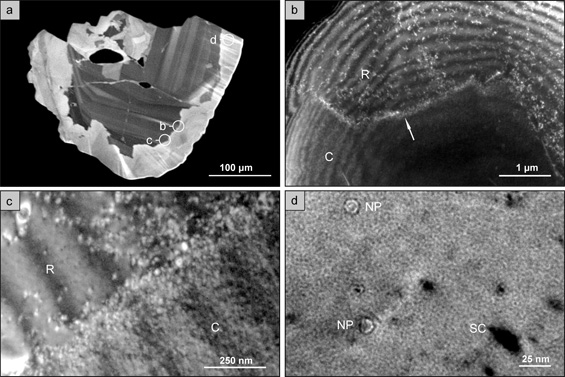Interpretation and validation of compositional and isotopic measurements in zircon are strongly dependent on zircon-forming processes. Recrystallization rims are a common feature of zircon crystals that underwent metamorphism. Chemical, isotopic, and microstructural study show that those rims form via a recrystallization front that migrates into pre-existing grains.
In the case of Valle d’Arbedo (Ticino, Switzerland) zircon, the process was chemically very efficient and eliminated about 95% of the trace elements present in the original grains. Recrystallization and loss of elements was associated with large pores and transport channels that later annealed. This resulted in non-metamict zircon rims that are low in porosity and inclusions (Figure 1). This study suggests that the formation of recrystallization rims with low defect density contribute to the chemical, isotopic, and structural preservation of zircon crystals which survived more recent metamorphic overprints.

Figure 1. (a) Panchromatic CL image of zircon VAL3-29 showing well-developed CL-bright rims cutting primary oscillatory zoning. Circles indicate the locations imaged by TEM. (b) Interface (arrow) between the recrystallization rim (R) and the primary core (C). (c) Non-metamict defect-bearing recrystallization rim and uniformly dappled primary core. (R) and (C) as in (b). (d) Nanoscale pores (NP) and strain centers (SC) typical of the recrystallization rim.
